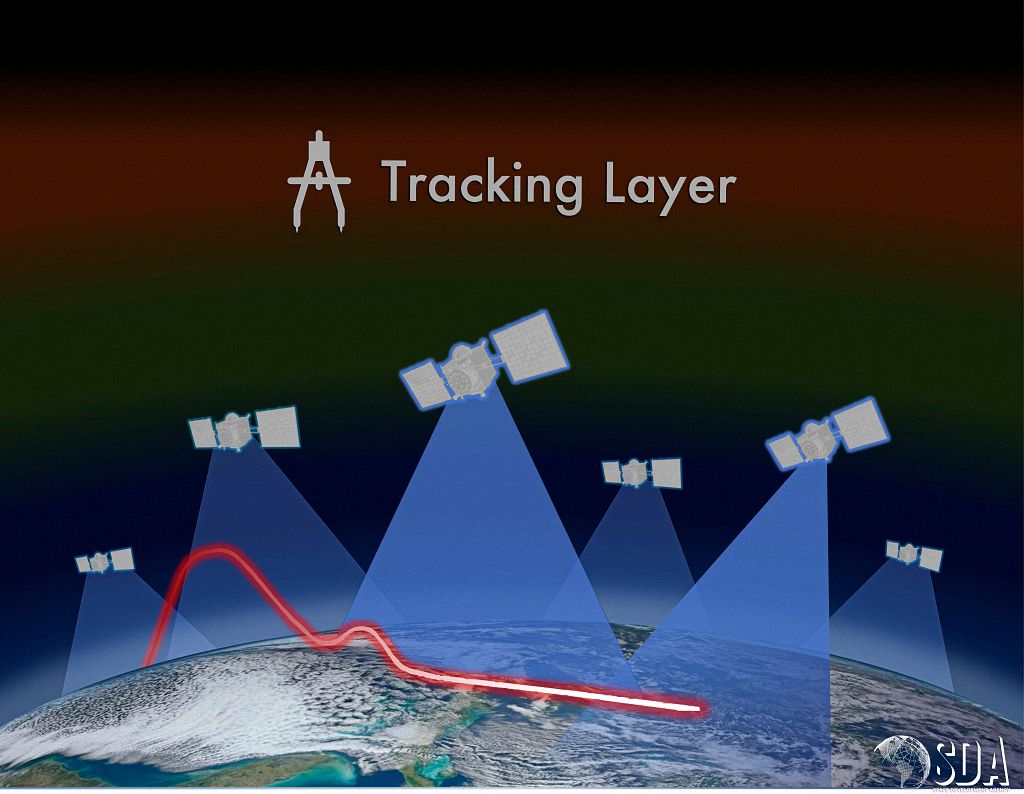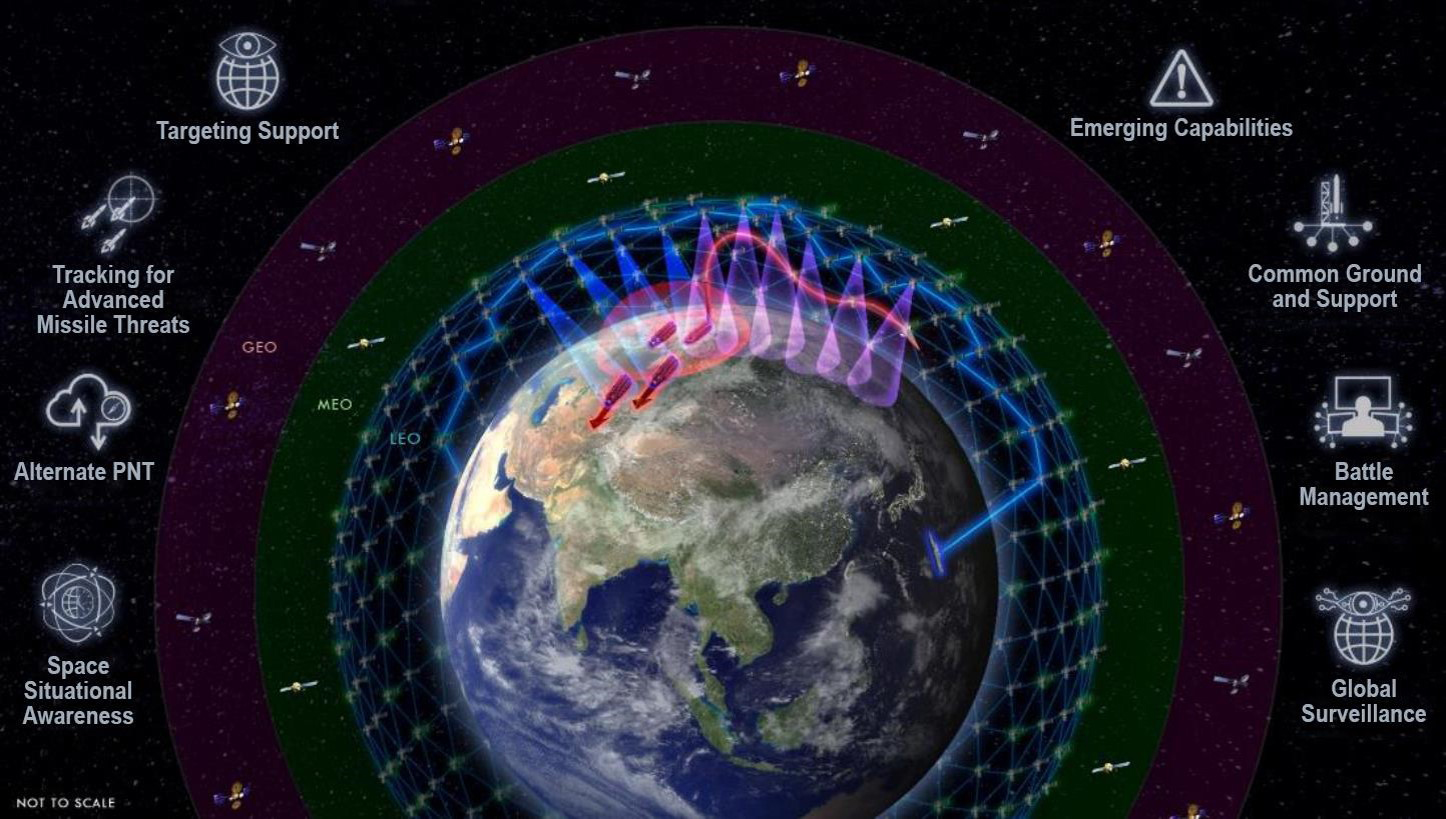|
Agency Awards Contracts for Tracking Layer of National Defense Space Architecture

The Space Development Agency announced today that two companies won bids to build out Tranche 0 of the tracking layer for the National Defense Space Architecture. Together, those contracts amount to more than $342 million.
We call it 'tracking' because it's missile tracking — so it provides detection, tracking and fire control formation for hypersonic glide vehicles, ballistic missiles ... any of those kinds of threats."
Derek Tournear, director, Space Development Agency
Both L3Harris Technologies, Inc., of Melbourne, Florida, and Space Exploration Technologies Corp., of Hawthorne, California, also known as SpaceX, were successful in their bids to participate in the NDSA.
Each company is expected to build four overhead persistent infrared imaging, or OPIR, satellites for the tracking layer of the NDSA. Those satellites should be ready by the end of fiscal year 2022.
"The satellites will be able to provide missile tracking data for hypersonic glide vehicles and the next generation of advanced missile threats," said Derek Tournear, the director of the Space Development Agency.
Tournear said both L3Harris and SpaceX will build satellites of their own design, but that meet criteria set by the SDA. They must all be able to do the missile tracking mission, and then also be able to communicate directly with transport layer satellites via laser communications link.

© DoD |
This most recent contract award is the second for development of the NDSA, Tournear said. About a month ago, he said, contracts were awarded for transport layer satellites. Those contracts went to Lockheed Martin and York Space Systems. Each of these companies will build ten satellites.
The contracts for both the tracking and transport layers are part of Tranche 0 of the NDSA. Tranche 0, he said, comprises 28 SDA satellites: 20 transport satellites and 8 tracking layer satellites. Tournear said there will be a separate solicitation to launch those 28 satellites.

© DOD |
"We call it 'tracking' because it's missile tracking — so it provides detection, tracking and fire control formation for hypersonic glide vehicles, ballistic missiles ... any of those kinds of threats," Tournear said.
When tracking layer satellites detect a threat, such as a ballistic missile, they send that information to satellites in the transport layer.
"The transport satellites are the backbone of the National Defense Space Architecture," Tournear said. "They take data from multiple tracking systems, fuse those, and are able to calculate a fire control solution, and then the transport satellites will be able to send those data down directly to a weapons platform via a tactical data link, or some other means."
Our architecture is entirely warfighter-focused for the terrestrial battlefield."
Derek Tournear, director, Space Development Agency
The development of the NDSA is based on two pillars: proliferation and spiral development. Ultimately, Tournear said, there will be hundreds of satellites that make up the NDSA.
"With Tranche 0 in 2022, we will provide enough capability to where people can start to experiment with what those data could do, and figure out how they could put that into their operational plans for battle," Tournear said.
Tranche 1, due in 2024, will include a couple hundred satellites in the transport layer, and a few dozen in the tracking layer. With Tranche 2, in 2026, the SDA would continue to build out the system as needed. By then, he said, the SDA would have global coverage, ensuring that the capabilities provided by the NDSA could be available to warfighters anywhere in the world.

© DOD |
"Every two years thereafter, we would continually spiral out and proliferate more satellites with new capabilities and, in essence, retire satellites with older capabilities as we develop new tranches," he said.
Tournear said that the NDSA is certainly based in space, its focus is mostly back on Earth — in support of service members conducting operations on land, at sea and in the air.
"Our architecture is entirely warfighter-focused for the terrestrial battlefield," Tournear said. "Our goal is to be able to provide real-time targeting data for targets, for time-sensitive targets and for missiles, so that the terrestrial warfighter can utilize space to be able to affect their mission in real time. We're focused on making sure that we can provide capabilities from space."
To plan for warfare at the speeds and distances required to operate in space, the Space Force must be lean, agile and fast. The new military service has been working on all of those things since it stood up in December, Raymond said.
A big part of the leaning effort, he said, is the reduction of bureaucracy.
«Since establishment, we've been in the business of slashing bureaucracy, delegating authority and enhancing accountability at every crossroad,» Raymond said. «My opinion: big organizations are slow. We must move at speed to outpace the threats that we face.»
The general said the Space Force, in an effort to reduce bureaucracy, implemented a large-scale reorganization that involved removing two echelons of command, including a numbered Air Force and an O-6-level command.
«We've also reduced the size of our planned staff at the Pentagon,» Raymond said. «Back when we started, the Pentagon staff was going to be over 1,000 people. That was the initial plan. We've slashed that by 40%. We're shortening the distance between decision makers and you, the experts, conducting our mission.»
Also part of eliminating bureaucracy, Raymond said, is a hard look at the agencies that exist now that are involved in acquisition for the space enterprise. He said Congress has identified some 65 different organizations involved in space-related acquisition.
* * *
|